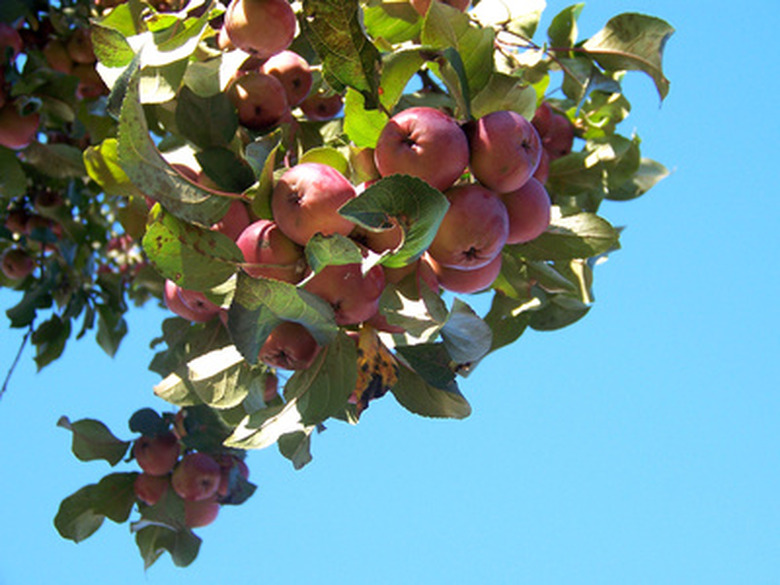Apple Growing Stages
It is fascinating to watch the growth of an apple from bud to mature fruit; it is also useful to gardeners and growers who have to contend with insects and disease. Being able to identify the growth stage of an apple is often the key to timing thinning and applying fertilizers and insecticides.
Buds
Dormant apple buds begin to swell in the early spring. The buds show a silver, fuzzy tissue then a green tip develops. This is the beginning of leaves; the leaves start growing, and as they fold back, they are called "mouse ears." After a few days, closed, hairy flower buds become visible.
The Flower Grows
As the flower buds grow, five green hairy sepals surround red petals. The flower stalks grow longer as the flower buds get bigger. White flowers tinged with pink burst open. The first flower in a cluster to open is known as the "king bloom." It often turns out to be the largest apple yielded from that cluster of blossoms.
- It is fascinating to watch the growth of an apple from bud to mature fruit; it is also useful to gardeners and growers who have to contend with insects and disease.
- After a few days, closed, hairy flower buds become visible.
Pollination Follows
White stalks flare from the center; these are the stamens, and they are topped with tiny yellow anthers that bear pollen. To lure honey bees, the blossoms produce a sweet nectar at the base of the petals. Bees move from blossom to blossom collecting pollen from the anthers on their hairy bodies; as they visit blossoms on other trees, the pollen rubs off on those blossoms.
Stigma
When the blossoms have shed their pollen, the petals begin to wilt, and the anthers begin to shrivel. The female stigma becomes visible; this is where visiting bees deposited pollen. The stigma makes the pollen available to the ovary so that it can begin growing into an apple.
From Ovary to Apple
The petals begin falling. The green sepals are still attached; as the ovary grows, the flared sepals turn upright, and the stamens shrivel and dry up. Below the sepals, fuzzy apples begin to grow rapidly. In about June in most areas, smaller apples drop from a cluster; this is called the "June" drop. Spray thinners need to be used before the June drop. After this, apples must be thinned by hand.
- White stalks flare from the center; these are the stamens, and they are topped with tiny yellow anthers that bear pollen.
- The green sepals are still attached; as the ovary grows, the flared sepals turn upright, and the stamens shrivel and dry up.
The Apples Mature
Several weeks later, soft hairs disappear from the developing apple. The expanding apples begin storing sugar. They get larger and turn green then red. Their weight makes them hang from their stems.
